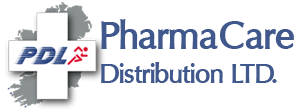According to the Center for Disease Control and Prevention, a stroke occurs when “something blocks blood supply to part of the brain or when a blood vessel in the brain bursts“. The brain controls a persons movements, stores their memories and also controls many of the bodies functions, such as breathing and digestion.
The brain needs oxygen to work properly, and the jobs of your arteries is to delivery oxygen-rich blood to all the different parts of your brain. If the flow of blood is blocked,the brain cells start to die as they are not receiving oxygen – this causes a stroke.
There are two types of strokes – an Ischemic stroke and a Hemorrhagic stroke.
Approximately 87% of strokes are Ischemic Strokes, which “occurs when blood clots or other particles block the blood vessels to the brain. Fatty deposits called plaque can also cause blockages by building up in the blood vessels“.
A Hemorrhagic stroke occurs when “an artery in the brain leaks blood or ruptures (breaks open). The leaked blood puts too much pressure on brain cells, which damages them“. Conditions such as high blood pressure and aneurysms can cause a hemorrhagic stroke.
Some common signs of stroke in Men and Women are:
• Sudden numbness or weakness in the face, arm, or leg, especially on one side of the body.
• Sudden confusion, trouble speaking, or difficulty understanding speech.
• Sudden trouble seeing in one or both eyes.
• Sudden trouble walking, dizziness, loss of balance, or lack of coordination.
• Sudden severe headache with no known cause.








